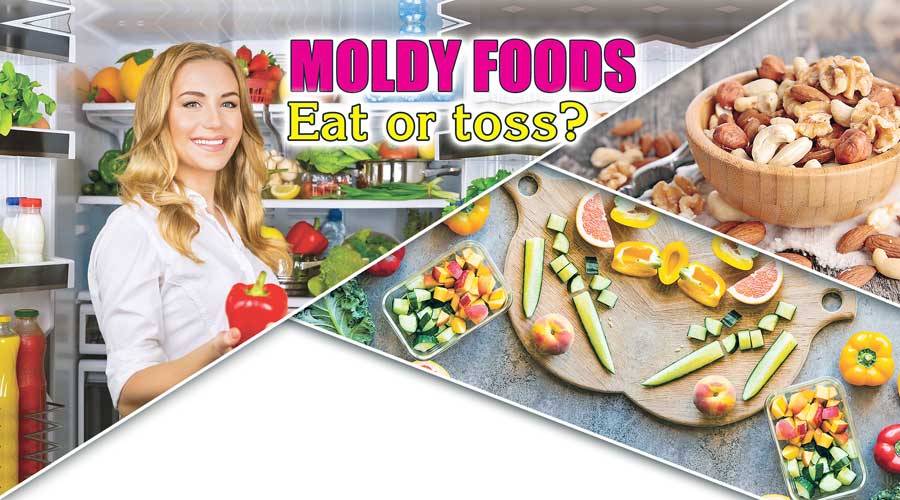Salt therapy – All you need to know
- 24 Feb - 01 Mar, 2024

Everything we consume has an expiration date – from yogurt and vegetables to baked goods and more. However, some of our pantry and fridge staples are more prone to mold production than others, creating a perplexing dilemma for those fighting against food waste.
After all, is it ever fine to eat moldy food? If so, what moldy foods are acceptable and which ones should be avoided? Below, learn which foods are safe to eat, and which are definitely not. Consider this your 101 guide.
The biggest problem with moldy foods is that cutting away the visibly moldy sections isn’t fully getting rid of the mold. For many of the moldy foods that are not safe to eat, there’s a very good chance that the mold has grown deeper into the food than you think. The roots of the mold often expand further into many foods than what you can see. (Yuck!) But this isn’t the case with firm fruits and vegetables, like cabbage, carrots, and some pears. Foods like these, as well as turnips, potatoes, and bell peppers, are still safe to eat as long as you remove the moldy spot and an inch or so all the way around it.
Can eat: Certain hard, cured meats
Moldy meat may sound like a nutritionist’s worst nightmare, but there are a few types of meat where mold is actually part of the deal. Certain meats automatically have a white surface mold. This is not there by accident – it’s a part of the manufacturing process. This benign mold is added to the outside of the [meat] for two reasons. It helps to cure it, and it provides a protective coating to keep the meat safe from bacteria. So mold on these types of meats shouldn’t scare you away. If you think you may be particularly sensitive to mold, though, simply scrub or cut it away before consumption.
When it comes to cheese, things can get confusing. Several different kinds of cheese are made with mold in the first place, but does that mean they’re safe to eat with mold? Well, cheeses like Gorgonzola and Stilton, where mold is part of the process, do sometimes develop an additional small surface mold that won’t harm the rest of the cheese. You’re also in the clear to eat hard cheeses like Asiago and Parmesan. Similar to the firm fruits and vegetables, hard cheeses will resist the spread of mold that would contaminate other foods. For all of these cheeses, cut away at least an inch around the moldy spot and discard that, making sure that your knife doesn’t come into contact with the mold.
While cheeses like Parmesan can withstand a bit of mold, softer cheeses like Brie and Camembert are no good. Their softer, more liquid-y nature can facilitate the spread of mold, and with it, bacteria. You should toss hard cheeses, too, if they’re shredded or sliced, as these processes negate the mold buffer that a substantial block of hard cheese has. And finally, moldy cottage cheese and cream cheese have to go as well.
You might think that these foods’ more solid nature, nuts in particular, might protect them against mold the same way as firmer vegetables. But the USDA’s guide to moldy foods warns that foods like these, as well as nut butters, are actually at an especially high risk of developing mold because they aren’t processed with preservatives.
You might be seeing a pattern here: Harder foods resist the infiltration of mold while softer ones are no longer good to eat. The porous nature of bread and baked goods is especially conducive to the spread of mold, per USDA.
Any food with a high moisture content that’s been affected by mold is bad news. This includes jelly, yogurt, sour cream, and other substances with a consistency like this that are packaged in a jar or tub. This is because the growth of mold can spread below the surface, according to the USDA. In jams and jellies, in particular, mold can also promote the growth of dangerous mycotoxins. Plus, the texture and consistency of these substances make it nearly impossible to fully remove any moldy patches, unlike more solid foods where the spot can simply be carved out.
COMMENTS